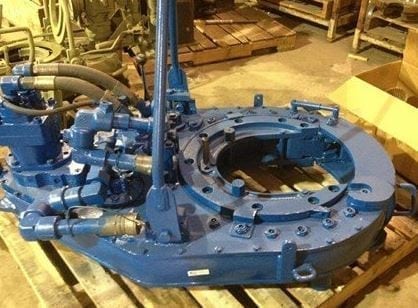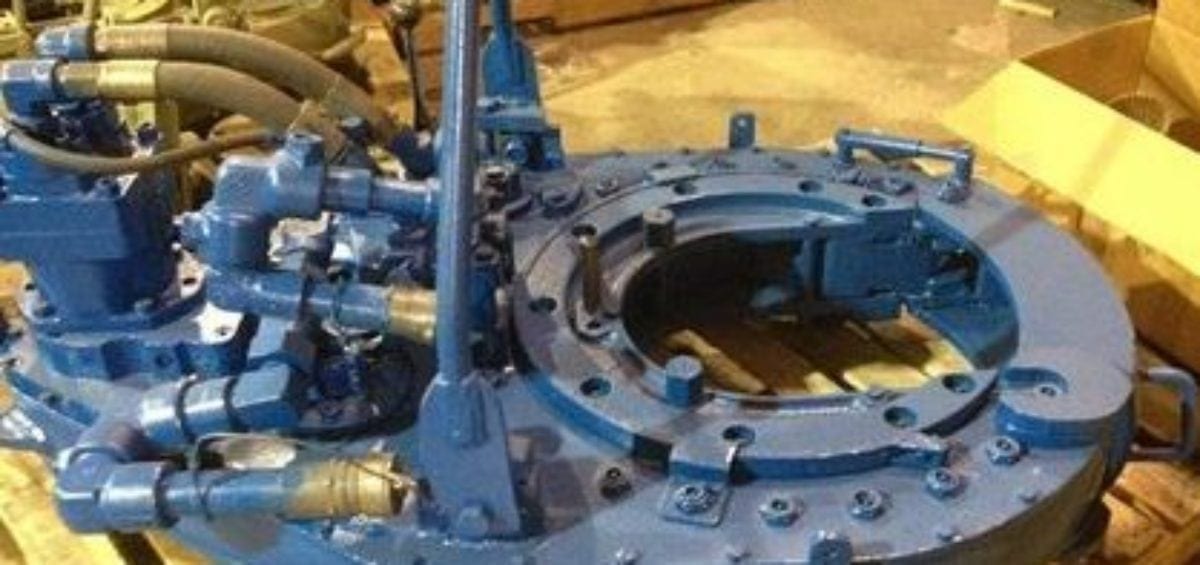Think of a big, self-locking wrench and you’ll start to see what rig tongs are used for. They spin pipe up and, in some instances, apply the final makeup torque. Power tongs are essentially large pneumatically or hydraulically operated rig tongs used for turning when making up or breaking out drill pipe, casing, tubing, or other pipe. Depending on the specific application, there are chisel tongs, casing tongs, rotary tongs, manual tongs, and more. Here, we’ll answer a few questions about rig tongs so you can better understand how they’re used and how they could benefit your oil patch operation.

What are rig tongs?
Rig tongs breakout or makeup casing, tubing, and drill pipes. Tongs used during breakout—or loosening operations—are logically called breakout tongs, while those used during makeup—or tightening operations—are called makeup tongs. Rig tongs are always used in pairs. The first set of tongs is tied off to the derrick with a cable or chain, while the other is pulled with mechanical catheads. How much force should be applied to the rig tong to get the right connection torque? One of the most important applications of the rig tong is to make up connection. When strategizing on how to do this effectively, you need to consider how to get the right torque value to the connection with the rig tong. The formula to determine torque value is this:
Torque=Force x Length of the tong
Where:
- Torque is measured in feet-pounds
- Force is measured in pounds
- Length of the tong is measured in feet
- Force is perpendicular to the length of the tong
What are the different types of rig tong drivers?Tong die drivers come in three basic varieties.
- Straight Tong Die Driver: Used for die slot redressing, the straight tong die driver is the simplest of type of rig tong. Though it is also the simplest type of rig tong to use, it is also the least safe of the three. Its handle and handguard protect hammer blows from falling onto the grip. Straight tong die drivers are lightweight—under eight pounds—and measure in at around 1”.
- Angled Tong Die Driver: The angled tong die driver has a grip that’s angled away from the perpendicular tong as well as brass guards for the tong tip and handle, making this rig tong safer than the straight tong die driver. While this tong is safer, however, it’s actually harder to keep the angle tong die driver in place. This driver is similar in length to the straight tong die driver, but is about two pounds heavier, weighing in at over nine pounds.
- Hammerless Tong Die Driver: This variety of tong die driver is made up of a hand pipe that can be used to apply pressure to the tong’s tip without using a hammer at all. This option is the safest of the three driver types because there’s no hammer required, it’s also the slowest driver for this same reason. The hammerless tong die driver is about as long and weighs as much as the straight tong die driver.
What oilfield tools does your operation need? Keystone Energy Tools has a tool to fit your bill. Contact us today to learn more about how rig tongs can make your work environment safer, and to learn more our other oil and gas industry products.
About Keystone Energy Tools
Keystone Energy Tools is a manufacturer with over fifty years of combined experience in designing, manufacturing, and delivering high-quality oilfield tools, including elevators, slips, dies and inserts, tongs dies, safety clamps, stabbing guides, drill pipe float valves, baffle plates, float valve pullers, rotating mouseholes, and tong blocks.
By using the latest in 3D modeling for product design, implementing unique strategies, and by staying current with the rapid advances in manufacturing technology and quality-assurance standards, Keystone is able to manufacture and produce the most reliable products on the market today.



